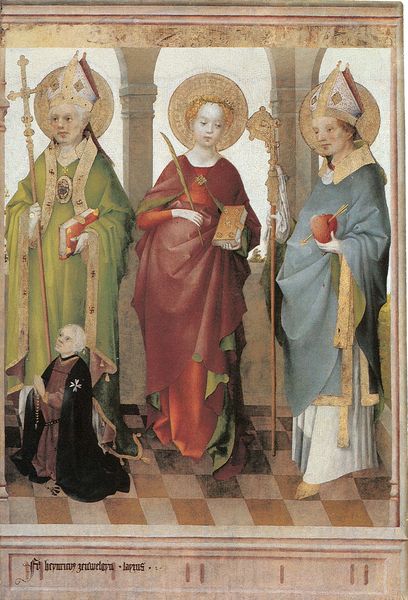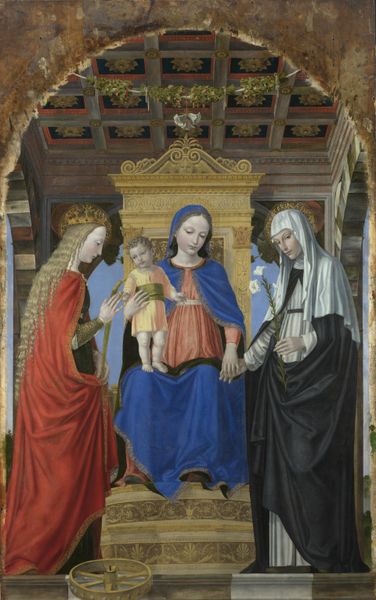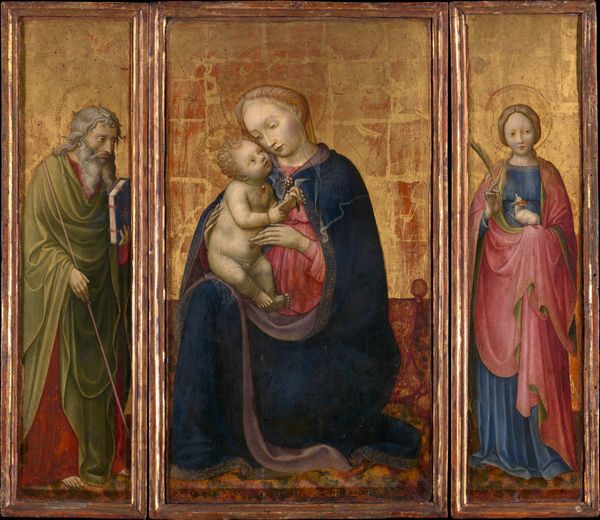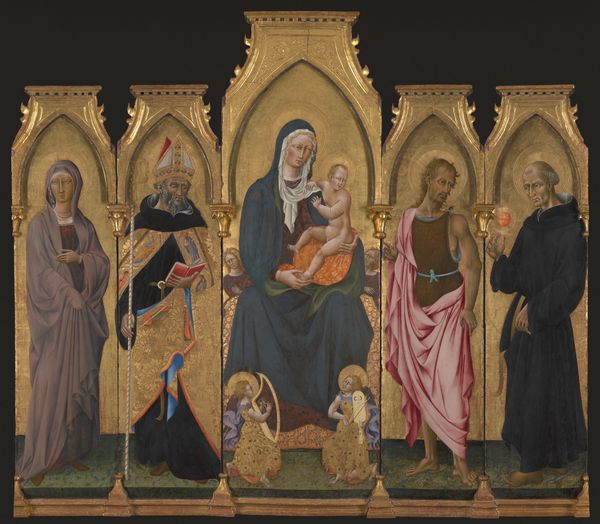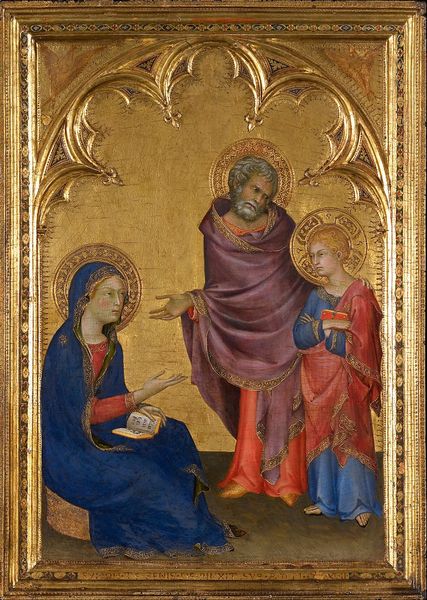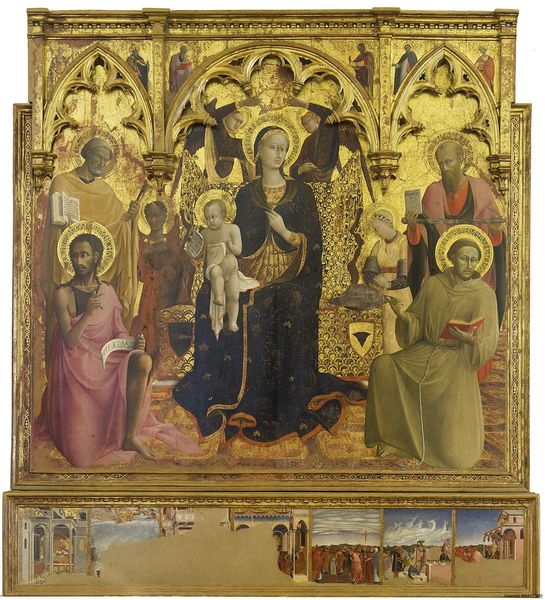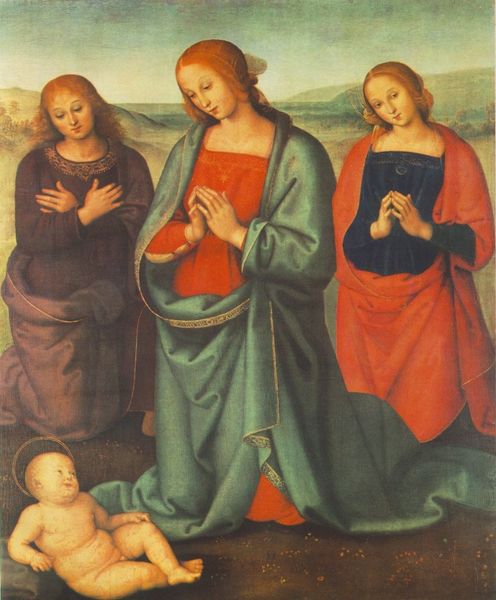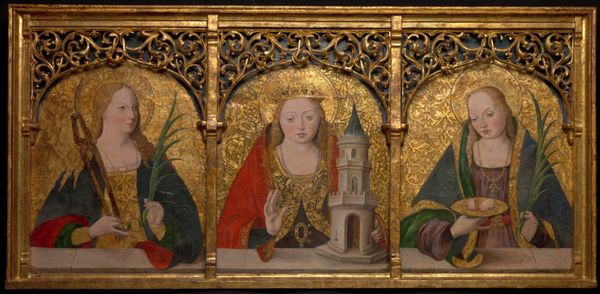
Three Saints (Matthew, Catherine of Alexandria and John the Evangelist) 1450
0:00
0:00
tempera, painting, oil-paint
#
portrait
#
medieval
#
narrative-art
#
tempera
#
painting
#
oil-paint
#
gothic
#
figuration
#
oil painting
#
history-painting
#
international-gothic
#
academic-art
Copyright: Public domain
Editor: This is Stefan Lochner's "Three Saints," created around 1450 using tempera and oil paint. The saints, Matthew, Catherine, and John, are depicted with incredible detail. What strikes me most is the sheer opulence, especially in the tooled gold leaf background. How would you interpret that within its historical context? Curator: I focus on how that gold leaf served to materialize power. Beyond its obvious preciousness, consider the intense labor required for its application. Gold wasn’t merely decorative; it signaled economic resources concentrated in the Church and the patronage system, reflecting the patrons ability to marshal skilled labor. In this work, that highly crafted background acts less as pure aesthetic beauty and more as a status symbol. Editor: That's fascinating! It changes how I perceive it. Are the figures also presented as symbols of wealth in a similar way, through their gowns, say? Curator: Absolutely. Think about the pigments. Were they derived from expensive sources, like ultramarine blue from lapis lazuli, suggesting wider trade networks? Also, observe how the gowns’ heavy drapery signals large quantities of fabric. What seems merely pictorial representation is evidence of actual, valuable materials and artisanal processes. The means of production are quite apparent in their clothing, too. Editor: So, rather than just religious icons, these figures also embody the tangible wealth of the Church and their patrons? Curator: Precisely. Lochner’s “Three Saints” becomes a document of material resources, artisanal labor, and a complex economic exchange disguised as a devotional image. Consider too the accessibility, or lack thereof, of such objects and the labor practices and value systems such limited access generates. Editor: I see! The materials and method become as important as the subject, providing valuable historical insights. It definitely offers a richer understanding. Thank you! Curator: You're welcome! Thinking materially shifts the conversation about value. It has certainly reshaped my reading of the painting.
Comments
No comments
Be the first to comment and join the conversation on the ultimate creative platform.

